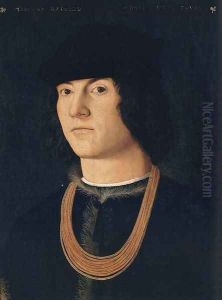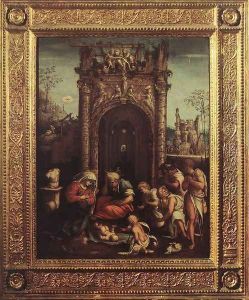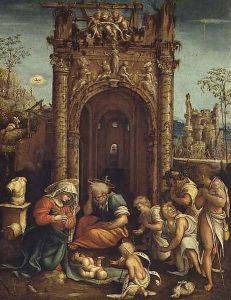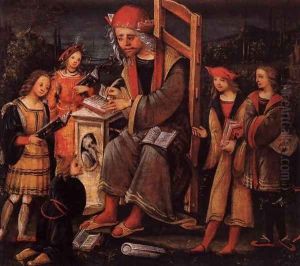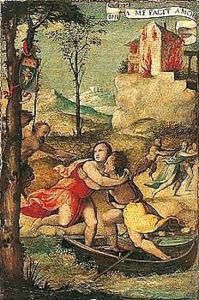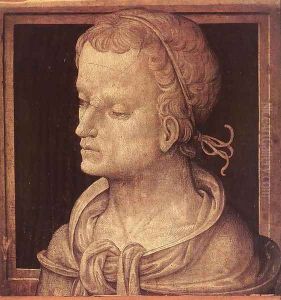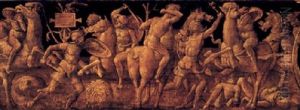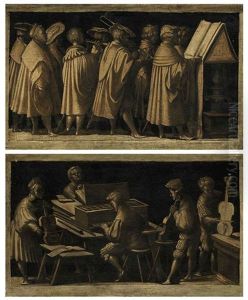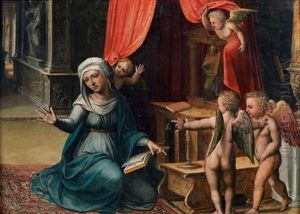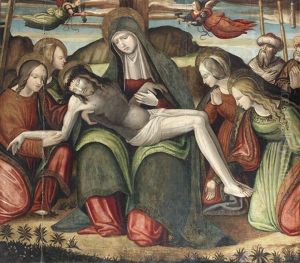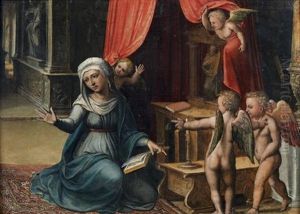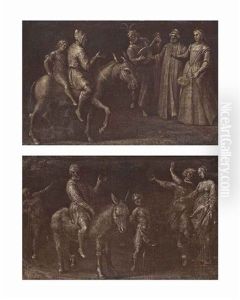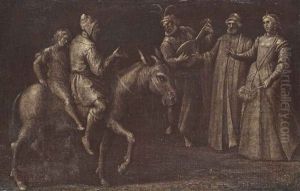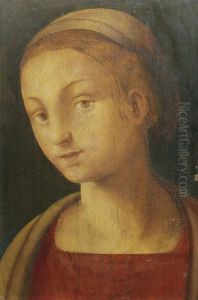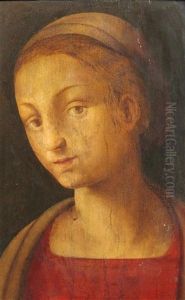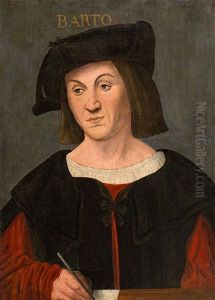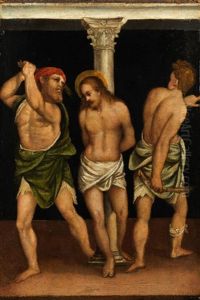Amico Aspertini Paintings
Amico Aspertini, also known as Amerigo Aspertini, was an Italian Renaissance painter whose eclectic style was influenced by a variety of sources, ranging from the works of his contemporaries to the art of antiquity. Born around 1474 in Bologna, Aspertini was part of a family of artists; his father was the painter Giovanni Antonio Aspertini. Amico's work is characterized by a distinctive, sometimes eccentric, approach to composition and figure drawing, which has led to a reputation as an imaginative and unconventional artist.
Aspertini is known to have traveled to Rome early in his career, around 1496, where he was exposed to the masterpieces of the High Renaissance and the ancient Roman sculptures. This journey had a profound impact on his art, and he is noted for his detailed studies of Roman antiquities. His drawings from this period reflect a precise understanding of human anatomy, a trait that would continue to define his work throughout his career. Aspertini's Roman experience also included a study of the works of artists like Michelangelo and Raphael, though he interpreted their influence in a highly personal and sometimes idiosyncratic manner upon his return to Bologna.
Back in his hometown, Aspertini worked on various commissions, including frescoes and altarpieces. His most renowned work is the fresco cycle in the Chapel of the Holy Cross in the Basilica of San Frediano in Lucca, which includes a striking depiction of the Last Judgment. Despite his obvious talent, Aspertini's style was often at odds with the prevailing trends of the time, which favored a more harmonious and idealized approach to art. His figures can be elongated and exaggerated, and his compositions sometimes appear restless or crowded, filled with a dynamism that can seem at odds with the serene balance sought by his peers.
Amico Aspertini's contributions to art were significant in terms of his individualistic approach and his bridging of the gap between the Renaissance's classical revival and the emerging Mannerist style. His works were influential in the development of later Mannerist artists, who were drawn to his unusual and often complex approach to composition and figure work. Despite his eccentricities, Aspertini was a respected artist in his time, though he never achieved the fame of some of his contemporaries.
Aspertini continued to work in Bologna until his death in 1552. His legacy is somewhat obscure compared to other Renaissance masters, and his body of work has not been studied as extensively. However, scholars recognize him as a significant if unconventional, contributor to the art of the Renaissance. His works can be seen in various museums and churches in Italy, offering a glimpse into the mind of an artist who was both a product of his time and a creator of his own unique artistic path.
